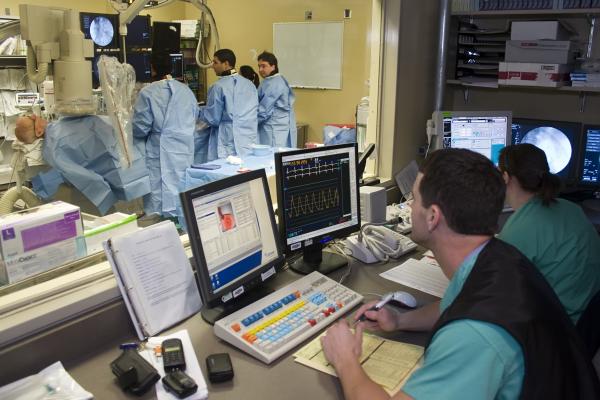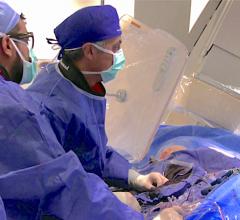
April 8, 2015 — A new non-profit association, the Organization for Occupational Radiation Safety in Interventional Fluoroscopy (ORSIF), was recently launched to generate awareness of the potential serious health risks linked to the use of and exposure to fluoroscopy. The association is headquartered in Washington, D.C.
Fluoroscopy, used in hospital catheterization labs and outpatient radiographic diagnostic laboratories, has been linked to health risks including cancer and career-threatening orthopedic problems.
"Health hazards linked to occupational exposure of fluoroscopy have been a serious concern for nearly thirty years and yet little action to affect any real change has occurred until now," noted Ron Waksman, M.D., FACC, associate director, Division of Cardiology at the MedStar Washington Hospital Center and director of experimental angioplasty and emerging technologies for the Cardiovascular Research Institute (CRI) at MedStar Washington Hospital Center. "The physicians and staff that work in interventional medicine are exposed to radiation every day. Many undergo back surgeries as a result of wearing heavy protective aprons throughout their careers. We welcome efforts to bring this issue to light on a grand scale. These physicians and staff need advocates to help make cath labs safe in hospitals across the country and around the world."
Interventional procedures are performed in close proximity to radiation sources, which pose an ongoing health risk for employees. The organization will focus on the medical specialties that perform procedures in the interventional fluoroscopy laboratory, including interventional cardiology, vascular surgery, electrophysiology and interventional neurology. Such procedures are a leading source of radiation exposure for medical personnel, and have been linked to the development of cancer, brain and thyroid diseases, and cataracts. In addition, the organization will concern itself with the serious orthopedic and musculoskeletal health issues facing doctors and staff, such as debilitating spinal conditions resulting from the use of the traditional lead-lined protective gear worn in fluoroscopy labs.
"Based on my own experiences in working with ionizing radiation during my career, it is critical that both healthcare providers and hospital administrators understand the serious health consequences to interventionalists and staff of long-term exposure to radiation," said Edward B. Diethrich, M.D., founder, the Arizona Heart Foundation. "Through ORSIF, our goal is to generate continued awareness of the severity of radiation-related illnesses and conditions so that they are fully understood by the healthcare industry. Best practices for providing the most effective protection available from these exposures will be shared with those who work with fluoroscopy and hospital management, whose goal it should be to ensure the safety of all workers."
In conjunction with ORSIF's official launch, the organization has released a white paper entitled, "Occupational Exposure to Ionizing Radiation in Interventional Fluoroscopy: Severity of Adverse Effects of a Growing Health Problem."
The white paper examines:
- Existing scientific evidence on the rising incidence of cancer, precursors to cataracts and other serious adverse health effects among medical professionals who perform interventional procedures;
- The musculoskeletal hazards that stem from the use of traditional personal protective equipment used by physicians performing interventional procedures;
- Dramatic contrasts between U.S. radiation exposure thresholds and more stringent thresholds recommended by international radiation protection agencies; and
- Potential solutions and changes that may increase occupational safety in interventional fluoroscopy.
For more information: www.orsif.org


 January 31, 2024
January 31, 2024 






